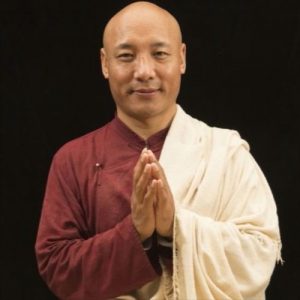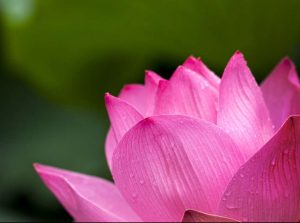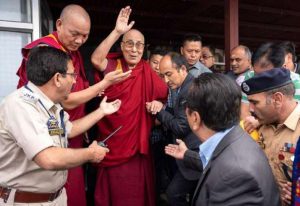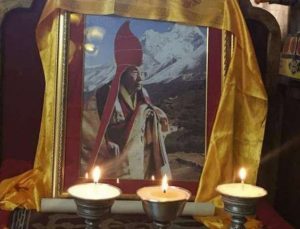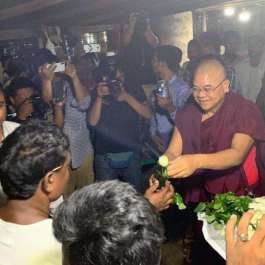
Buddhism created archetypes of individuals who have very different goals from each other. For example, a sravaka, literally a listener, is someone who is struggling to become enlightened only for themselves. All of his or her spiritual practices are dedicated to liberating themselves from samsara, the cycle of existence. In contrast, the bodhisattva is someone who is seeking enlightenment for all beings. The very motivation of her journey is to awaken sentient beings to the highest freedom, or nirvana. These two archetypes of individuals are widely discussed in the Mahayana scriptures, which bluntly state that there is a hierarchy between these two motivations. They point out that the motivation of the sravaka is still tainted by selfishness because one can never become completely enlightened as long as such motivation is the underlying anchor of the spiritual path. They teach that everyone, including the sravaka, must evolve into a bodhisattva sooner or later in order to become a fully awakened buddha, or samyaksambuddha.
A bodhisattva is not someone who strives only for some kind of grand attainment of enlightenment for all beings, but also engages with the world trying to alleviate all forms of suffering, including illness, poverty, and injustice, to bring both earthly and transcendent happiness to others. The bodhisattva ethos is beautifully expressed in this verse by the eight-century master Shantideva:
May I be a guard for those without one,
A guide for all who journey on the road,
May I become a boat, a raft, or bridge,
For all who wish to cross the water.
May I be an island for those who need land,
And a lamp for those who wish for light,
May I be a bed for those who need to rest,
And a helper for all who live in need
Here he describes the selfless motivation of a bodhisattva, who is willing to engage with the world and to do whatever she can to release others from suffering. This verse also invites us to imagine a bodhisattva who is not some kind of holy being or great meditator living in a beautiful environment, such as a mountain retreat or hermitage, basking in the inner bliss of enlightenment. Instead, a bodhisattva is someone who is living in the world, engaging in very concrete actions to help fellow beings. The verse also connotes that a bodhisattva is not always someone who is performing great deeds that receive society’s praise. She is someone who is always ready to help anybody she runs into with whatever struggle they are dealing with in that moment.
This also tells us that we don’t have to become some great soul who influences the lives of vast numbers of people. It reminds us that we can be who we are and still be a bodhisattva. Life may present us each and every day with an opportunity to embody the bodhisattva ethos in real time.
The idea of engaged Buddhism is very much in coherence with the ethos of a bodhisattva. It is a movement that has attracted public attention for some time now, beginning on the Indian subcontinent and in other Asian countries, and eventually spreading to the West. Being a part of this movement of engaged Buddhism is not so much a personal choice if we truly want to become enlightened. You can’t just say “engaged Buddhism is not for me.” It’s like saying “enlightenment is not for me.” I do believe that most Buddhists are looking for nirvana. As long as we believe in the profound wisdom of the Mahayana sutras, being part of engaged Buddhism is a path that we cannot simply maneuver around.
Today’s world is facing an enormous number of challenges in the realm of social, environmental, and economic issues. These problems are so overwhelming that we may easily descend into believing a very convincing voice that tells us, “There’s nothing I can do. I’m just one person.” But we should not trust this voice. Instead, we may regard it as a sermon from Mara, another archetypical being whose full-time job is to corrupt and discourage a bodhisattva’s heart. At other times, Mara’s sermon can be seductively encouraging, saying, “Well, I’m practicing meditation, and having all these beautiful experiences such as inner peace and awakening. So there’s no need to think about all the mundane issues in the world.”
There are times when we don’t find any real situation where we can help someone. In those times, we should still keep the bodhisattva’s heart. Sooner or later, the world will ask you to be a bodhisattva. Such a request may not come as a grand project. It can be as simple as when someone is struggling and is just in need of a kind word from you. Your kind word may have the power to lift their spirit in that moment. Here, if you are coming from a pure intention, you are doing the bodhisattva’s work.
There are two forces moving right now in many societies. One force is the desire and movement to alleviate the woes of society as much as possible, and bring well-being to everyone without exception. Another force is very much stuck in ego that wants to serve oneself, no matter the cost to others. We see these two forces fighting even in the political arena. Although world events may often bring us to despondency, we must believe that the power of compassion and altruism will eventually prevail. This is the true aspiration of the bodhisattva that we should nurture and cultivate within our hearts.
See more
Related features from BDG
Buddhist Epistemology
Buddha-nature
Is Buddhism a Religion?


